 | Webster Wells - Algebra - 1879 - 468 pages
...: d then, ad = b с Whence, b : a = d : c. 347. If four quantities are in proportion, they will be in proportion by COMPOSITION ; that is, the sum of the first two terms will be to the first term, as the sum of the last two terms is to the third term. Thus, if a : b =... | |
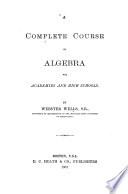 | Webster Wells - Algebra - 1885 - 372 pages
...as the fourth term is to the third. Let a : b = с : d. Then, ad — be. Whence, b : a = d : c. 299. In any proportion the terms are in proportion by Composition;...term, as the sum of the last two terms is to the third ter.n. Let a : b = с : d. Then, ad = be. Adding both members to ac, ac + ad = ac + be, or, a Whence... | |
 | Webster Wells - Algebra - 1885 - 324 pages
...prove that 300. In any proportion the, terms are in proportion by Division ; that is, the difference of the first two terms is to the first term, as the difference of the last two terms is to the third term. Let a : b = с : d. Then, ad = be. Subtracting... | |
 | Webster Wells - 1885 - 368 pages
...(Art. 296), • 300. In any proportion the terms are in proportion by Division; that is, the difference of the first two terms is to the first term, as the difference of the last two terms is to the third term Let a : b = с : d. Then, ad — be. Subtracting... | |
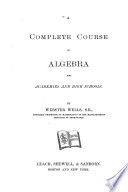 | Webster Wells - Algebra - 1885 - 370 pages
...prove that 300. In any proportion the terms are in proportion by Division; that is, the difference of the first two terms is to the first term, as the difference of the last two terms is to the third term. Let a : b = с : d. Then, ad = be. Subtracting... | |
 | Webster Wells - Algebra - 1885 - 382 pages
...by Division; that te, the difference of the first two terms is to the first term, as the difference of the last two terms is to the third term. Let a : & = с : d. Then, ad = bc. Subtracting both members from ac, oc — ad = ac — &e, or, a(c — d)... | |
 | Webster Wells - Geometry - 1886 - 392 pages
...VI. THEOREM. 248. In any proportion the terms are in proportion by DIVISION ; that is, the difference of the first two terms is to the first term as the difference of the last two terms is to the third term. Let a:b = c:d, Then ad = be. Subtracting both... | |
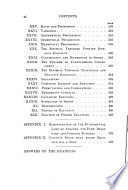 | Webster Wells - Algebra - 1890 - 560 pages
...first as the fourth term is to the third. Let a : b = c : d. Then, ad = bc. Whence, 6 : a = d : c. 387. In any proportion the terms are in proportion by Composition...of the last two terms is to the third term. Let a : 6 = c : d. Then, ad = be. Adding both members to ac, or, a(c + d) = c(a + b). 388. In any proportion... | |
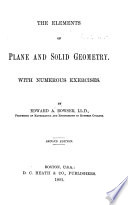 | Edward Albert Bowser - Geometry - 1890 - 420 pages
...= be. (281) .-. a:c = b:d. (283) QED Proposition 5. 287. If four quantities are in proportion, they are in proportion by composition; that is, the sum of the first and second is to the second as the sum of the third and fourth is to the fourth. Hyp. Let a : b = c... | |
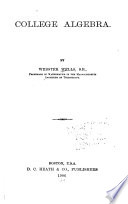 | Webster Wells - Algebra - 1890 - 604 pages
...b:b = c+d:d. 388. In any proportion the terms are in proportion by Division; that is, the difference of the first two terms is to the first term as the difference of the last two terms is to the third term. Let o : 6 = c : d. Then, ad = be. Subtracting... | |
| |